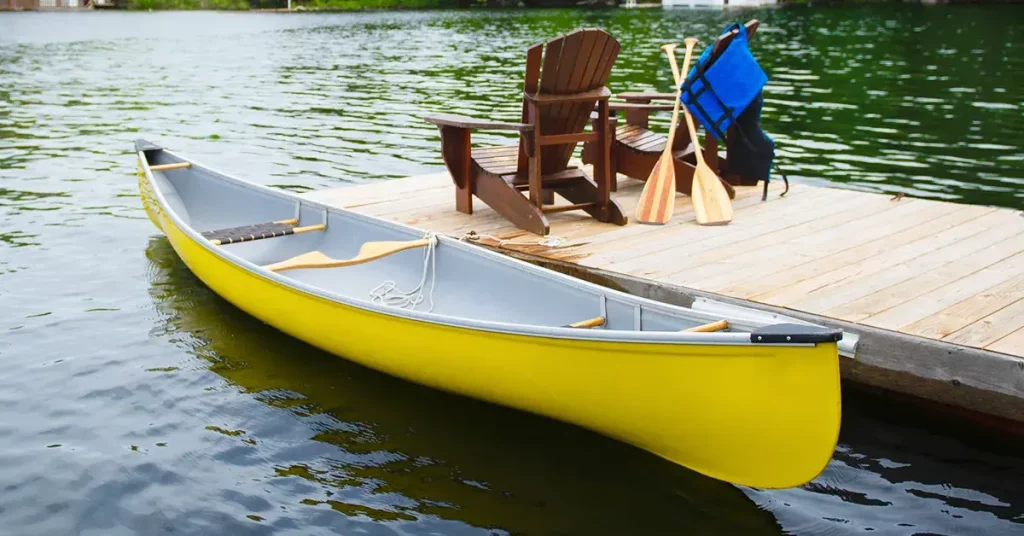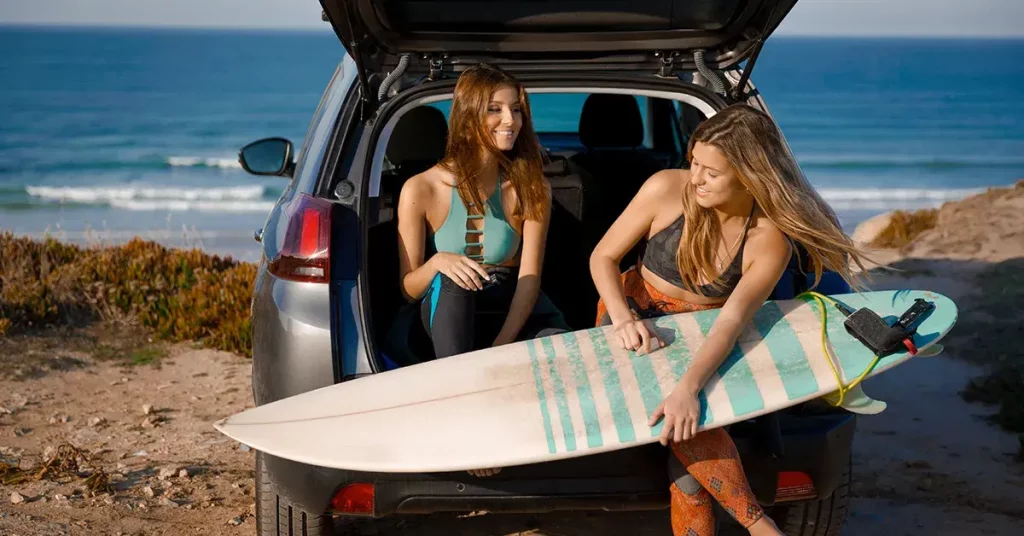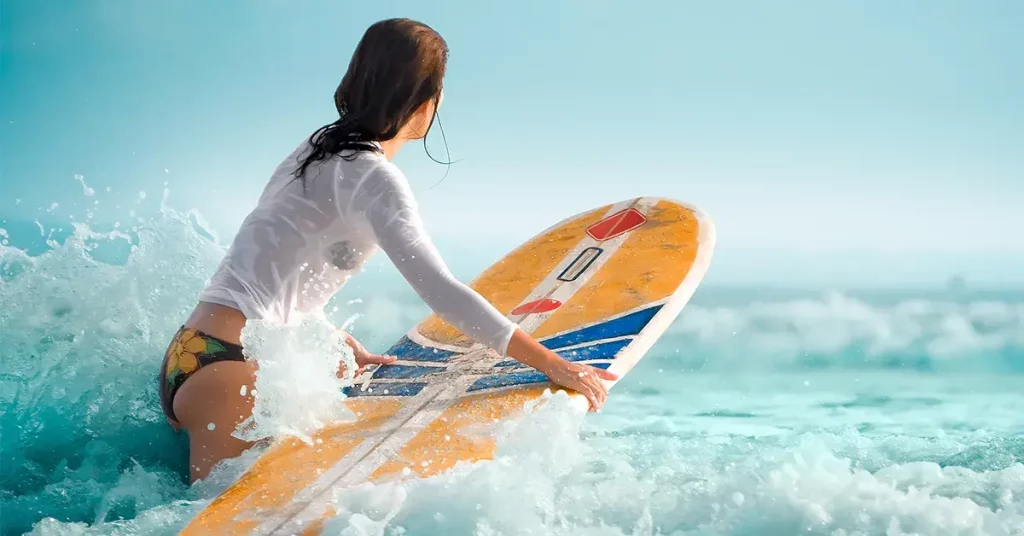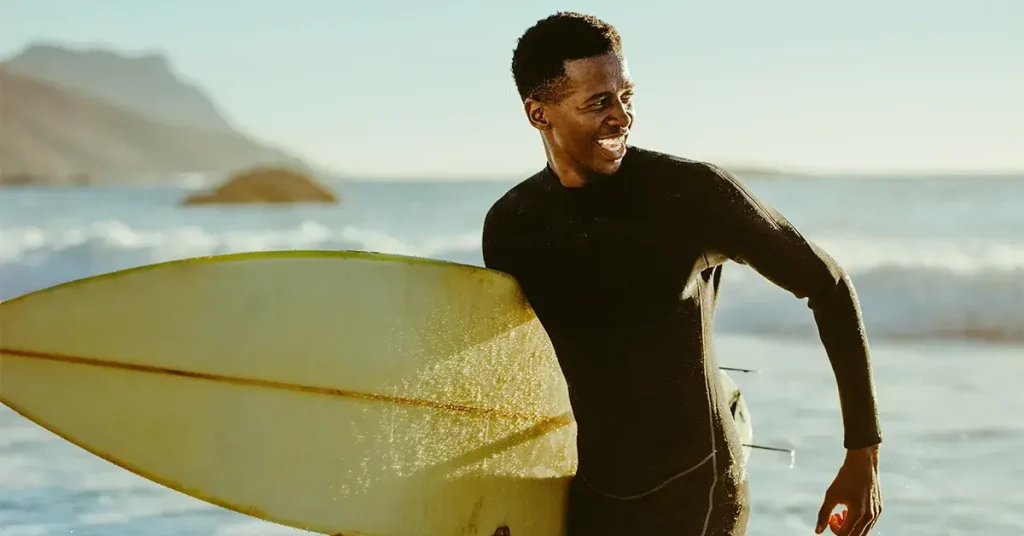Thwarts? Gunwales? Yokes? What are those again? Whether you’re new to canoeing, or just need a little refresher, canoeing terminology can be a little confusing. If you’re looking for a detailed explanation of the different parts of a canoe, then look no further.
Knowing the parts of a canoe will not only make you seem like a real outdoorsman in front of your friends – but it’ll also help you when picking out a canoe of your own.
I’ll break down all the parts of a canoe in detail, so you’ll be crystal clear on the difference between a yoke and keel!
Canoe Parts Diagram
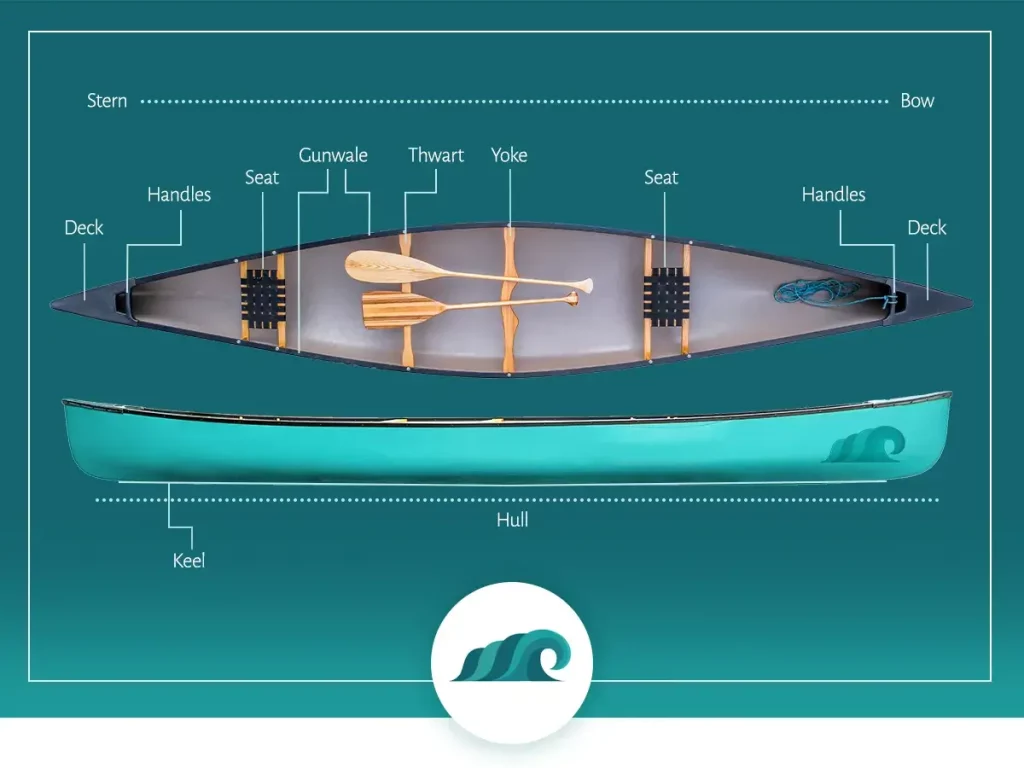
Here is a diagram to help visualize all the parts of a canoe.
Canoe Parts Terminology
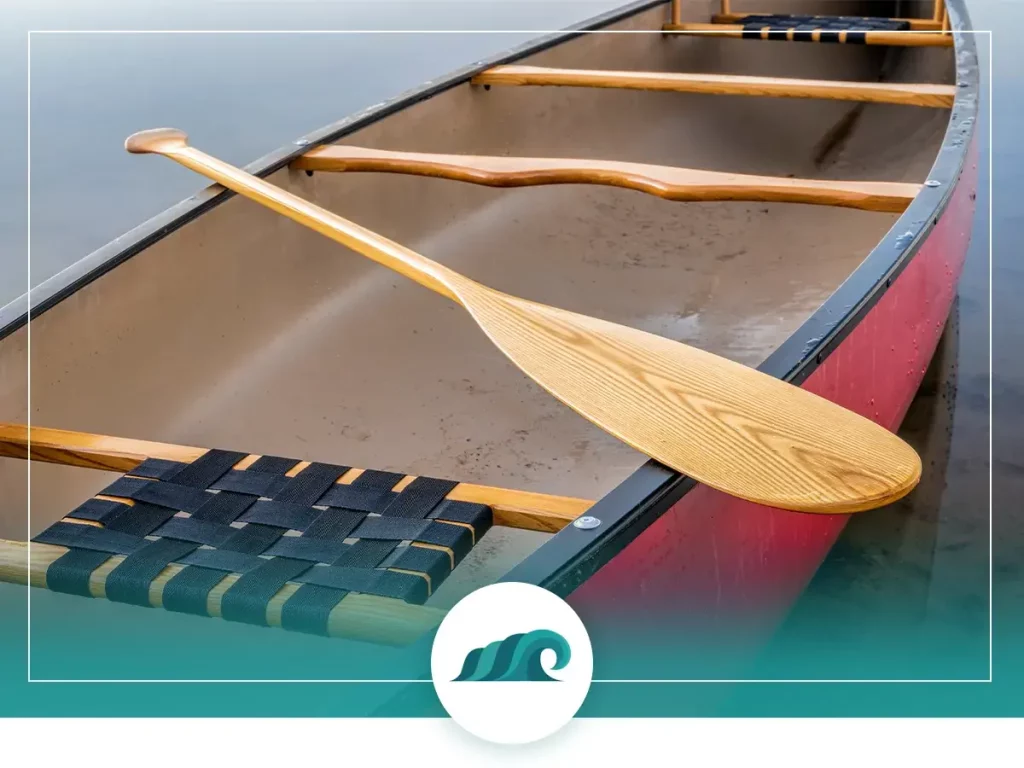
Every paddler should have a good grasp of canoe parts terminology. Let’s take a look at the various canoe components in greater detail.
Bow
Like other watercraft, the bow refers to the front of a canoe. It’s easily differentiated from the stern by looking at the seats in a tandem canoe. The hull will plenty of room in front of the seat for your legs and gear, while the stern seat will have very little room behind it.
Canoe bow and stern profiles can feature different shapes, which will affect the way they cut through the water. These profile shapes are called the stems. Square shaped stems will improve tracking ability in the water, while more rounded stems will increase maneuverability.
Stern
The stern is the canoe’s rear end. If a canoe has a seat mounted towards the stern, there will typically be very little storage space behind it.
In a tandem canoe, the paddler seated in the stern is responsible for controlling the direction of the boat. The stern is also where you’d mount a trolling motor.
Gunwale
The gunwales – also referred to as gunnels or rails – are the part of a canoe that runs along the top edge of the hull. The name originates from a reinforcing band added above the gun deck on old sailing warships – to offset the stress created by firing cannons.
Gunwales can be made from a wide variety of different materials, including aluminum, vinyl, composites, and wood. As the gunwales tend to receive a lot of wear and tear during paddling and portaging, you’ll want to look for a good balance between durability and weight.
Plastic and vinyl gunnels offer a high degree of impact resistance, weight more than other materials, and are typically the cheapest option. Aluminum gunwales offer a high degree of protection while keeping weight to a minimum. Wood gunnels provide a beautiful classic look, require a bit more upkeep, and are typically the priciest option.
Thwart
Thwarts are the braces that span the width of a canoe – adding structural rigidity to the hull. They’re often made from hardwood, although aluminum and plastic thwarts are also common.
The number of thwarts on a canoe will largely depend on its length. Longer canoes need more structural support, and hence more thwarts.
Some canoe designs feature bench seats that double as thwarts in place of traditional thwarts. You’ll often see these in square backed canoes designed for fishing and hunting.
Yoke
The yoke refers to a specialized thwart right in the center of the craft. It’s used for loading the canoe onto your shoulders while you portage.
Most canoe yokes will feature a semi-circle shaped cutout for easier weight distribution across your shoulders. If you’ve never portaged before, you may want to add a pair of yoke pads to your cane. These pads cushion your shoulders, making a difficult portage much more pleasant.
Hull
The hull is the main body of the canoe. It refers to the entire exterior portion of the craft.
Hulls are typically made from polyethylene, composites, aluminum, or wood. Each material has its respective strengths and weaknesses, I won’t get into detail about them here.
Hull shapes also differ widely, depending on their intended purpose.
Flat bottomed
Flat bottomed hulls are pretty much exactly what they sound like. They have flattened bottoms which greatly increase primary stability (steadiness when flat), at the expense of secondary stability (stability when tipped on its side). These hulls are often found in fishing and beginner canoes, as they feel very stable and you can stand up easily while casting.
Round bottomed
Round bottomed hulls are essentially the opposite of flat-bottomed canoe hulls. They feature fully rounded hulls with poor primary stability and excellent secondary stability. They feel extremely tippy to the uninitiated but are very difficult to capsize. You’ll find this hull style in touring canoes.
Many hull shapes will utilize a hybrid of the two hull shapes listed above. These hulls are called moderately rounded or shallow arch hulls. These hulls will offer a good compromise between primary and secondary stability for general use paddling.
Keel
The keel on a canoe refers to the external (usually metal) ridge that runs along the centerline of the hull from the bow to the stern. Keels were originally built into wooden canoes for structural reasons, but are now used to increase tracking ability. They also help protect the hull from damage when you come in contact with rocks, gravel, and fallen logs.
While keels will increase your tracking ability in the water, they do this at the expense of paddling efficiency. Whitewater canoes will often feature a flat keel that protects the hull from rocks but doesn’t impact your boat’s maneuverability.
Handles
Many canoes feature small handles integrated into the bow and stern. These make carrying or dragging your canoe overland easier. They can also make loading and unloading it from a canoe roof rack less of a pain.
Deck
The deck refers to the small flat panels attached to the ends of the bow and stern. They often have built-in handles for easier carrying.
Seat
Canoe seats vary widely, from simple bench style wood-framed seats to padded aftermarket seats with built-in backrests and lumbar support. Basic bench-style seats are often made from a hardwood frame with nylon webbing laced in between to support your weight. Some are also made from polyurethane or aluminum.
Some canoes will come with one or more built-in full backrest seats. These are usually canoes designed for fishing, where a good seat can come in handy during long term use.
Canoe Design Terminology
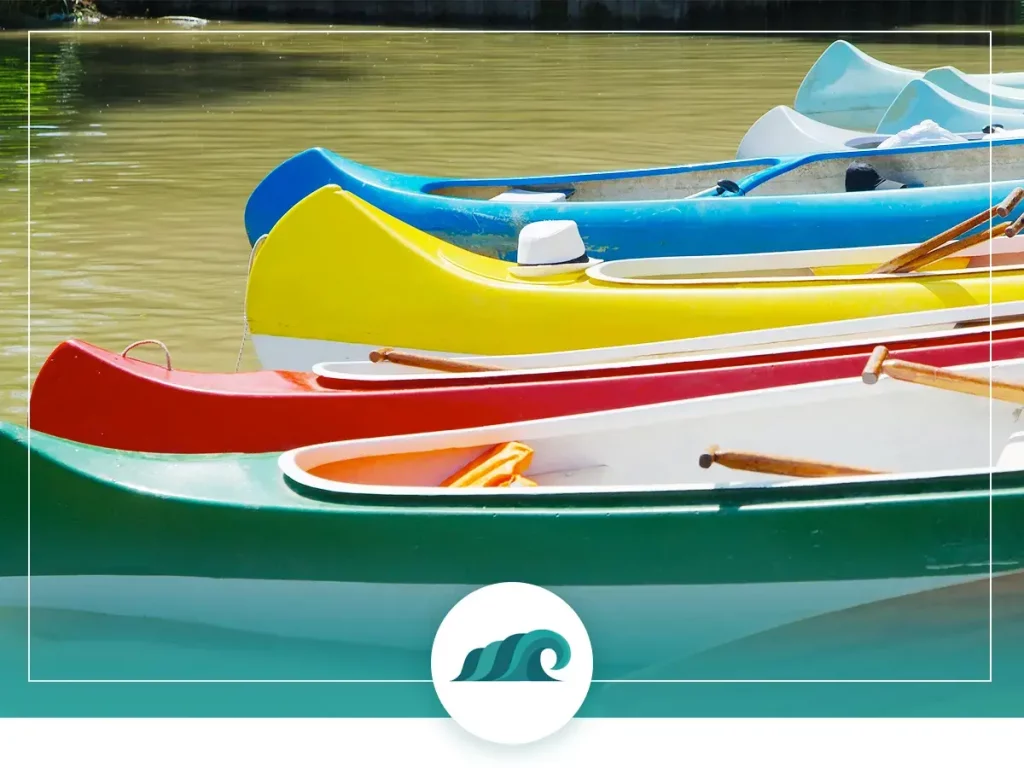
Beam
Beam refers to the width of a canoe at the widest point – typically the midpoint of the hull. It can be measured at the gunwales or the waterline.
Canoes with wider beams tend to be more stable but sacrifice some efficiency. Narrower canoes are swifter but less stable.
Rocker
Rocker refers to the amount of curvature between the hull and stern. More rocker means they’ll be more area of the hull and stern above the waterline while your paddling.
More rocker increases maneuverability but decreases load capacity and max speed. You’ll find more rocker in canoes designed for river and whitewater use.
Freeboard
A canoe’s freeboard is the vertical distance from the gunnels down to the waterline at the lowest point. It will vary based on the load inside the canoe at any given time.
Generally, more freeboard means more load capacity and better performance in rapids and waves. Too little freeboard means you’ll be dangerously close to the waterline, and waves will have a greater chance of capsizing your canoe.
Canoe Profile
A canoe’s profile has a major impact on its performance in the water. We’ve already touched on this briefly when discussing hulls, but a more thorough explanation will help you get a better picture.
The profile refers to the shape of the hull when looked at head-on. Think of slicing a canoe in half and examining the shape of the cross-section.
Tumblehome
A tumblehome is a canoe with a hull that’s wider at the waterline than it is at the gunnels. This design increases load capacity, while still being easy to paddle.
Flare
Flare shaped canoes feature sides that flare outwards from the waterline to the gunnels. They’re very tip-resistant, but some paddlers find them awkward to paddle because you have to reach to get your paddle to the water.
Straight Side
Straight side canoes are exactly what they sound like. They have straight sides that don’t bow inwards or outwards. They don’t provide any additional benefits.

